Veteran Oilman Concludes Climate Change Is No Hoax:
Record Heat, Crippling Drought Are Just The Beginning
BY GEORGE KRUMME
Everyone occasionally makes decisions that prove to be unwise. I recall the story of a man who was warned that an approaching flood would soon reach his house. When a fleeing neighbor offered him a place in his car, the man refused, saying, “My faith will save me.” Later, as the rising water drove him to the second floor, a man in a rowboat offered him a place, but he declined for the same reason.
The flood finally forced him to the roof, but he refused to get in a rescue helicopter, and eventually he was swept away and drowned. At the Pearly Gates, the man protested, but St. Peter replied, “We sent you a car and a boat and a helicopter – how much more did you expect?”
OK, a dumb joke, but even a dumb joke sometimes can help us think a little about what we know, what we think we know, and what we need to know about the care of our home, the planet Earth.
As one who has spent more than 60 years in the oil and gas business, I took special interest in the public debate over climate change. Oklahoma Sen. Jim Inhofe was traveling the world claiming it was the “greatest hoax” ever. Climate scientists were sounding the alarm over an impending point of no return.
I decided to investigate for myself. What I found scared the hell out of me. And this was before the sizzling summers of 2011 and 2012.
All things being equal, the Earth might well be approaching a cooling period now, leading slowly toward a new glacial age. But other things are not equal – there are new kids on the block – us, and there are billions of us.
Until recent times, the highest concentration of CO2 gases in the 800,000-year ice core history reached 299 parts per million about 325,000 years ago. In 1750, the concentration stood at 280 ppm, but the Industrial Revolution brought about a large-scale mining of coal, whose burning released increasing quantities of CO2 into the atmosphere. [The subsequent consumption of oil and gas has contributed somewhat similar amounts.]
By the year 2000, carbon dioxide in the atmosphere had increased to 370 ppm, but the growing consumption of fossil fuels, helped a little by the widespread destruction of forests, has added an additional 20 ppm in only 10 years.
This unprecedented rapid increase in greenhouse gases has alarmed most trained observers, because it portends a dangerous increase in the temperature of our planet.
Since 1980, the earth has grown about one degree Fahrenheit warmer than the average temperature of the previous 30 years, a warming that seems to be very modest, but the earth is quite sensitive to small changes in temperature – at the Last Glacial Maximum, with glacial ice covering the continent as far south as Ohio, the average temperature was only about 10 degrees colder than at present. And there is every indication that the temperature will continue to climb.
There is a popular misconception that the science of climate change itself is still in question. Not exactly.
Virtually all members of the profession agree, and the few scientists who disagree mostly specialize in other fields – geologists, meteorologists, geographers, and physicists of various specialties, many of whom have a relationship with coal and other fossil business interests.
How did we get here? And how bad is it?
HISTORY
For one thing, we know why we are on Earth rather than any other satellite in the solar system – all the other planets are too big or too small or too close to the sun or too far. The only other planets even in the running are the two nearest to us, namely, Venus, a little smaller and closer to the sun, and Mars, quite a bit smaller and farther from the sun.
We have every reason to believe that they were originally composed of the same stuff that formed the planet Earth, but their size and distance from the sun quickly made them uninhabitable.
Mars, the more likely of the two, is so small that its gravity retains only a thin atmosphere, and without a significant quantity of greenhouse gases, Mars cannot retain much of the sun’s radiant energy.
On the earth, the atmosphere absorbs only a little of the sun’s incoming energy, but greenhouse gases trap a considerable amount of the radiation that the earth sends back into space.
My school geography textbook, printed in 1936, says, “[A]lthough the atmosphere is capable of absorbing only relatively small amounts [15%] of short-wave incoming solar energy, it is, on the other hand, able to retain 75±% of the outgoing long-wave earth radiation.” [If we had no greenhouse gases in our atmosphere, the average temperature at the earth’s surface would be about 0º F rather than a comfortable 57º.]
Water vapor and carbon dioxide are two of the most effective greenhouse gases. [Methane is actually much more potent, but, in the atmosphere, a methane molecule soon exchanges its four hydrogen atoms for two oxygen atoms and becomes carbon dioxide.]
But Mars holds an atmosphere so thin that it exhibits essentially no greenhouse effect, and the robots that NASA has sent there tell us that the average temperature at the surface of Mars is about 60 degrees below zero Fahrenheit.
If there ever was life on Mars, there is certainly no sign of it now.
The probes that NASA sent to the planet Venus tell a different story. Water is essential to our form of life, and Venus, in its earlier days, may well have had plenty of H2O. If so, the heat of the sun apparently evaporated it and drove its hydrogen into space, because NASA’s contraptions have advised us that there is a noticeable shortage now.
With little hydrogen available, Venus’ oxygen atoms chose to mate with carbon, with which, like Earth, the planet is adequately endowed. Venus’ atmosphere is 97% percent carbon dioxide, which does a marvelous job of holding in the planet’s heat. The temperature at Venus’ surface is about 850º F – hot enough to melt lead.
So, Papa Bear is too cold, Mama Bear is too hot, but Baby Bear – the Earth – is just right.
Or at least it is at the present time. Originally, of course, at its formation, the earth was molten, and it took a billion or so years to cool enough to form a crust. Lacking an effective thermostat, the earth continued to cool – the oldest rocks indicate that the surface became so cold that, more than once, the planet became a snowball, or at least a slushball, and the first appearances of life on earth were restricted to some variety of green scum.
Finally, about 600 million years ago, enough greenhouse gases had accumulated in the earth’s atmosphere that the last of the ice and slush melted, and a warming earth became hospitable for more advanced forms of life. The geologic period we call the Cambrian had begun.
Since that time, the earth has cooled and warmed, but seldom to a life-threatening degree. True, two long Ice Ages have occurred, each lasting millions of years, with numerous advances and retreats of the ice within each. We are currently in a third such Age.
The causes of these cold periods are complicated and obscure, but many scientists believe that the height and position of the continents as they drift across the surface of the globe and as they alter ocean currents, are the most likely cause of the Ice Ages. [The physical properties of the earth and of water are such that relatively small changes in temperature can trigger important changes in climate.]
Let me emphasize the difference, for purposes herein, between an “Ice Age” and a “glacial period.” Following a convention used by some scientists and for clarity of reference in this article, an “Ice Age” refers to spans of time 50 or 100 million years long, where the climate is so consistently cold that sheets of ice cover the poles. But with regard to a particular Ice Age, as the ice caps advance and retreat, I shall refer to the icy times as glacial periods, and to the warmer times, when the ice has retreated to a position near the poles, as interglacials.
We are now in an Ice Age, technically, because both poles are covered with sheets of ice. This particular Ice Age began about 2½ million years ago, but we are fortunate to be living in an interglacial period, the so-called Holocene [Greek, meaning completely recent] interglacial, that began about 10,000 or 12,000 years ago when the latest continental glaciers completed their retreat poleward.
In our present Ice Age, North America has experienced four easily-documented glacial periods [an advancing glacier tends to scrape off the signs of previous expansions]. In one of the those, the ice coverage, which can attain thicknesses of two or three miles, reached as far south as Kansas. [Evidence in other parts of the world suggests that there have been perhaps as many as 20 glacial periods in the last two and a half million years, with short, matching interglacial periods.]
During the couple of centuries since geologists recognized the existence of repeated continental glaciation, scientists have speculated about the cause of the glacial advances and retreats. Some proposed that changes in the sun’s radiation caused the fluctuations, and indeed the strength of radiation does wax and wane somewhat, but these periodic changes are weak and short, so investigators were forced to look for better answers.
About 1860, an Irish physicist, John Tyndall, demonstrated that carbon dioxide was an effective greenhouse gas, but a Swedish physical chemist, Svante Arrhenius, was the first to predict, half a century later, that the increased burning of fossil fuels would warm the planet, with a geometric increase in CO2 causing an arithmetic increase in temperature – that is, that every doubling of CO2 would cause an increase of a few degrees. [Arrhenius, as a resident of Sweden, considered such global warming to be a blessing.]
Arrhenius suggested that an elevation of CO2 in the atmosphere brought about the end of each glacial period, but he could not find a reason for an increase in CO2. Solving that problem required input from a different discipline, the study of the earth’s journeys around the sun.
During World War I, a Serbian geophysicist, Milutin Milankovitch, spent the years of his internment developing a theory to explain the warming that initiated the ending of a glacial period. [A sort of a prisoner, he was nevertheless allowed to spend every day at the library of the Hungarian Academy of Sciences cracking the books.]
Milankovitch proposed that variations in the tilt of the earth’s axis of rotation, the precession of that axis in space, and alterations in the eccentricity of the earth’s orbit around the sun brought about a modest increase in temperature that tripped various feedback mechanisms that, in turn, amplified those increases.
Let’s look a little at these three celestial phenomena:
The axis of the earth’s daily rotation is tilted about 23.5 degrees from perpendicularity to the plane of the planet’s revolution around the sun. [It is this tilt which causes our seasons. The earth’s yearly orbit causes the north and south poles to alternate pointing toward the sun, giving us the misperception that the sun rises high in the sky on the days of summer and much lower during the winter – the conception is wrong, but the effect is real.]
The angle of the tilt does not remain constant, varying over a period of 41,000 years from 22.1 degrees to 24.5 degrees. This variation, a result of the gravitational attraction of other planets as they traverse their orbits, alters somewhat the amount of the sun’s heat received, particularly at the north and south poles.
Furthermore, the direction that the earth’s axis points in space slowly makes a gigantic circle in the heavens. The north end of the axis currently points almost exactly toward Polaris, the “North Star,” but that is a temporary condition.
Due to various forces acting on our spinning planet, the point directly above the North Pole traces a circle in the heavens every 26,000 years [much like the circling of the axis of a child’s top as it spins, which a few of us may remember].
This movement is called precession, and the circling movement is in the opposite direction from the rotation of the earth and its revolution around the Sun. In astronomical time, Polaris will soon lose its standing, but, if you are willing to be patient for 26 millennia, Polaris will once again serve as our North Star.
As the axis precesses slowly in its giant celestial circle, the positions of our planet at the time of the equinoxes change, and astronomers commonly use the term “precession of the equinoxes” for the phenomenon. [Thus, the vernal equinox, the beginning of spring, annually occurs at a position in space 1/26,000 less than a complete circle from the previous one.]
If the earth’s path around the sun were a perfect circle, the slow precession of the equinoxes would make no difference in the amount of energy received at any point on the earth during the year. However, the earth’s path is not a circle; it is an ellipse, an oval [and the sun is not actually at the center of the oval].
So, with the passage of time, at every season – say, for example, winter – the earth moves, almost imperceptibly, to a different position on the oval, and this variation affects the distance from the sun to the earth, thus altering the amount of heat the earth receives.
The third variation that Milankovitch studied involves the oval path itself, the orbit, which independently precesses in a 21,000-year cycle. Furthermore, the eccentricity of the oval, its flatness, varies with a dominant cycle of 100,000 years, and that change in flatness affects how far from the center of the oval the sun is located as well as how close the earth approaches to the sun, and that makes a lot of difference in the amount of radiation the earth receives.
Sounds complicated and is complicated, but I’ll be danged if the glacial periods of our current Ice Age haven’t exhibited dominant cycles of about 100,000 years from peak cold to peak cold, so, despite Milankovitch’s funny name, climatologists believe his analysis makes sense.
IT’S IN THE STARS
So far, we have been dealing with the heavens in physical terms, that is, with actual observed and calculated positions and movements. But, in addition, there exists a related field, astrology, built on the belief that various heavenly bodies have an influence on human affairs, and, in particular, on the claim that an individual’s personality and life experiences are affected by the positions and conditions of planets and stars at the moment of birth.
[Let me caution you that, so far as can be determined, astrology is a feature of the mind more than of the physical world, but even so, it is a part of our history and our culture, and hence worthy of a little diversion.]
To divine what these influences might be, Babylonian astrologers divided the apparent path of the sun through the heavens into 12 parts that they allied to 12 constellations of stars, the signs of the zodiac, and attached the sign of the constellation through which the sun appeared to be passing to that 1/12th of the year, approximately 30 days long.
The division into twelfths is a natural development, because the time between new moons is about 29½ days. There are therefore slightly more than 12 “moons” in a year – the words moon and month have the same base.
That coincidence was important to Babylonian sky-gazers and surely contributed to their frequent use of the number 60, doubly appropriate because 60 is divisible by so many numbers – that is, 2, 3, 4, 5, 6, 10, 12, 15, 20 and 30. Babylonian astronomy and mathematics led to the division of the hour and minute into 60 parts, the circle into 360 degrees, and day and night into 12 hours.
So why not the zodiac into 12 constellations, one for each moon?
The Babylonians adopted their zodiac some 2,500 years ago. [The Greeks latched on to the system and gave some of the constellations Greek names.] The zero point, you might say, was chosen as the commencement of spring, the “vernal equinox,” and the following 30-day period, as the sun seemed to pass through the constellation Aries, assumed the astrological sign of Aries, with the other 11 signs following as the year progressed.
Nowadays, we use a variation of the Roman calendar, which itself originally began at the vernal equinox, around today’s March 21, but it contained only 10 months – hence the names September, from septem, seven; October from octo, eight; November, from novem, nine; and December, from decem, 10, with the following couple of moons unnamed.
[Instead of 12s and 60s, the Romans fixed on 10s, surely because we have 10 digits. The ancient Mayans, operating independently half a world away, preferred to count on their toes as well and used 20 as their arithmetical base.]
The early Roman calendar worked well enough, but an early Roman king loused up a perfectly logical system by moving the beginning of the year to the end of December and naming the two orphan months Ianuarius and Februarius.
The Babylonians apparently were unaware of the precession of the Earth’s axis as it traced out its enormous circle in the heavens. About 130 B.C., a Greek astronomer, Hipparchus, realized that the entire overhead sky at the time of the vernal equinox had shifted somewhat. He analyzed what must be happening and announced the precession of the equinoxes.
Sure enough, by the third or fourth century A.D. the sun at the vernal equinox was clearly lodged in the constellation Pisces, but the astrologers of the western world refused to acknowledge the changes, and to this day they continue to assign the sign Aries to the first 30 days or so after the vernal equinox.
[Hindu astrologers accepted celestial reality, and, for them, the first days of spring are currently controlled by the sign of Pisces. Since astrology is nonscientific and imprecise, it’s every man for himself when it comes to exact dates and boundaries. In both East and West, a convenient fuzziness prevails.]
But even so, western astrologers have acknowledged that, in actuality, the Age of Aries is past and we are now in the Age of Pisces. Most astrologers aver that the vernal equinoctial sun will not enter the next zodiacal constellation, Aquarius, until a few centuries from the present, but some astrologers maintain that Aquarius is already beginning to affect human affairs as the Age of Pisces peters out.
[Some older readers may remember that the song, “Age of Aquarius” from the Broadway love-rock musical “Hair,” announced only the “dawning” of the Age of Aquarius, not its arrival. “Hair” anticipated that the new Age would bring in an era of love, humanity, and peace, and the song soon shifted to an appeal to “Let the Sunshine In.” A trifle premature, obviously, but maybe, when the Age of Aquarius does actually arrive … ]
At any rate, we now know quite a bit about our home planet and its activities. We know that none of the other satellites that circle our sun can support life – or at least our kind of life – which requires liquid water. We know that the amount of energy the planet receives from the sun, combined with just the right amount of greenhouse gases, keeps the temperature at livable levels, but close enough to the freezing point of water that sometimes the earth is covered with a bothersome amount of ice and at other times, with no ice at all.
Remember that the term “Ice Age,” for purposes herein, is used for spans of time, 50 or 100 million years long, where the poles are continuously covered with sheets of ice. We know that investigators believe that those Ice Ages were probably caused by continental drift, and that they are punctuated by glacial periods, with extensive ice sheets, and interglacial periods, when the ice has retreated to the poles.
We also know that our planet has experienced two completed Ice Ages in the last 600 million years and we are at present in an interglacial period of a third such Ice Age, which began about 2½ million years ago. We know that we are still in that Ice Age – both the North Pole and the South are still covered with ice – but that mankind has adapted extremely well to the relatively constant temperatures during the 10,000 or 12,000 years since the end of the latest glacial period. What’s more, scientists can now determine the approximate composition of the greenhouse gases and the approximate temperature of the atmosphere for the last eight hundred thousand years. How can they do that?
The same level of scientific advancement that has allowed us to put men on the moon and fill the ether with messages and moving pictures has devised ways to read much of the history of our planet from cores cut with a hollow drill deep into glacial ice on Greenland and on Antarctica.
To quote Wikipedia on Ice Cores, “The relative concentrations of the heavier isotopes [of hydrogen and oxygen] in the condensate indicate the temperature at the time, allowing for ice cores to be used in local temperature reconstruction after certain assumptions. In addition to the isotope concentration, the air bubbles trapped in the ice cores allow for measurement of the atmospheric concentrations of trace gases, including greenhouse gases carbon dioxide, methane, and nitrous oxide … An ice core from the right site can be used to reconstruct an uninterrupted and detailed climate record extending over hundreds of thousands of years …”
Many ice cores have been recovered worldwide. A 2.25-mile core taken in 1998 at Vostock station on Antarctica covers about 420,000 years. The core contains data extending back four complete glacial cycles and matches well with known geological and archeological evidence, and with analyses of cores of oceanic sediments. [An ice core taken a few hundred miles from Vostock in 2003 reaches back about 800,000 years.]
When graphs of air temperature and atmospheric carbon dioxide [CO2] versus time are constructed, the curves track one another astoundingly well. The graphs show that glacial conditions develop slowly and that cooling continues for tens of thousands of years.
Recall that we learned earlier that the 100,000-year glacial-to-interglacial alternations were triggered by changes in the tilt of the earth’s axis and periodic flattening of its orbit, as proposed by Milutin Milankovitch.
After 70,000 or 80,000 years of lowering temperature, the Milankovitch effect generates a moderate increase that sets off several amplifying feedback mechanisms that increase the warming drastically.
First, the higher temperatures cause sea ice to melt and glaciers to shrink. Snow and ice are the best reflectors of radiation, and the blue sea and dark lands absorb much more of the incoming radiation.
Second, water vapor itself is a very powerful greenhouse gas, and evaporation from the warming seas feed more water vapor into the atmosphere. Increased water vapor, the raw material of clouds, furnishes the greatest climate feedback.
[So far, climatologists are not sure whether clouds themselves diminish warming by reflecting heat to space more than they amplify it by trapping radiation.
Water is actually a feedback mechanism for both global cooling and warming. In addition to the water vapor effect, if some outside force causes the oceans to cool, they can absorb CO2 from the atmosphere and diminish greenhouse warming. If, on the other hand, some physical condition warms the oceans, their ability to absorb CO2 is diminished – warm liquids cannot hold as much gas in solution, which is why an opened bottle of coke gradually goes flat in a warm room. The oceans hold in solution roughly 50 times as much carbon dioxide as the atmosphere.]
Third, hydrates of methane frozen in tundra swamps and locked in sediments on the oceanic continental shelves thaw and release methane into the atmosphere. Atmospheric methane lasts only decades, but during its short life it is 20 or 30 times more effective than CO2 – and then it exchanges its four hydrogen atoms for two oxygens to begin a new, indefinitely long life as carbon dioxide.
As the temperature increases, the level of CO2 increases – but, in Mother Nature’s glacial cycle, the growth in atmospheric CO2 does not force the increase in temperature, it follows the temperature rise by a few hundred years.
Nowadays, it is we, not our dear Mother, who are causing the increase in atmospheric carbon.
There are negative, opposing feedbacks as well, of course, and the increase in plant growth is an important one. Plants prosper in wet, warm environments, and they utilize carbon dioxide in their growth, so an abundance of CO2 benefits them. Trees particularly lock up carbon quite effectively, and parts of the world are blanketed by forests.
I hadn’t really thought much about trees until someone asked, “What are trees made of?” The question forced me to scratch my head a tad and finally to re-educate myself a little.
Trees, like all plants, are mostly made from air. Millions of years ago Mama Nature developed plants with leaves, which have the ability to use energy from sunlight to draw carbon dioxide from the atmosphere and combine it with water and a few minerals from the soil to make various forms of the hydrates of carbon – carbohydrates. [The structure of wood is built of various forms of such hydrates, most of which contain molecules too long and too tightly bound to be digested easily, although termites obviously have found a way.]
Please quit your carping – I am well aware that the water in plants comes from the ground, but where did the ground get the water? From rain, which is water vapor that has condensed as clouds and fallen from the sky. So I still suggest that trees are mostly made out of thin air and only a little other stuff.
[How plants figured out how to photosynthesize, we do not know – they obviously did not learn it from a book, because, unlike the puzzle of the chicken and the egg, we know that plants came before paper, whose earliest form, papyrus, was a reed, and which nowadays is made from wood.]
In the operation, photosynthesis releases as a waste product a couple of atoms of oxygen for every carbon atom it consumes. Before plants adopted their magic process, the earth’s atmosphere contained a limited amount of free oxygen, but now oxygen composes about a fifth of the air we breathe, allowing our lungs to extract it and deliver it into our blood, which distributes it throughout our bodies.
Our various organs then perform their own magic to consume the energy that is released by the conversion of hydrates of carbon, including starches and sugars, back into water and, yes, carbon dioxide.
[I know, I know: I left out a lot of odds and ends, like proteins, calcium, etc., but I’m already over my head, and besides I have promises to keep, so be patient, already. I realize that we were taught all that stuff in school, but then we forgot. And forgetting is why we adults are not as smart as fifth graders, but relax! Given time, they will become as dumb as we are.]
By the way, ultimately, plants furnish the chemicals that compose the human body, and their contributions of carbon, oxygen, and hydrogen constitute 93% of the mass of each human. So you might say we are also made of air, which should furnish some degree of comfort by confirming that the people who don’t share your opinions truly are airheads.
Anyhow, trees do soak up a lot of CO2 and spreading forests do slow down the warming of the planet.
VOLCANOES
And then there are volcanoes. One might think that volcanoes, transferring heat from the earth to the atmosphere, would add to global warming, and of course they do, slightly. They also spew out CO2 – but less than 1% as much as the burning of fossil fuels.
On the other hand, volcanoes hurl a lot of tiny particles high into the atmosphere, and the dust remains suspended for several years, reflecting sunlight and bringing about significant, but temporary, cooling.
A couple of centuries ago, one such eruption by Mount Tambora, in Indonesia, threw so much junk into the sky that the consequent chill caused crop failures throughout the northern hemisphere.
People named 1816 “the year without a summer.”
If a concentration of volcanic eruptions shades the planet for an extended period, as occasionally happens, a trend toward lower temperatures can set in. But of course, volcanic eruptions are random events, so far as we know. Geologist Richard Alley comments, “If volcanoes could get organized, they could rule the world.”
There are other cooling factors, but they are no match for the positive feedbacks that follow a Milankovitch trip point, and the elevation of temperature at the end of a glacial period is comparatively rapid – the last increase, very welcome to the Cro-Magnon cave dwellers, I am sure – began about 20,000 years ago and took about 8,000 or 10,000 years.
As the Milankovitch trigger fades and various feedback mechanisms elevate the temperature, the earth radiates more energy to space, a new balance is reached, and a blessed calm, an interglacial, sets in for a spell.
Ice cores reveal that interglacial periods characteristically last only a short time, on Earth’s time scale, commonly a few tens of thousands of years.
As mentioned earlier, all things being equal, the Earth might well be approaching a cooling period now, leading slowly toward a new glacial age. But things are not equal because our population is exploding – seven billion and counting.
The result: an increase in greenhouse gasses, portending dangerous increases in the temperature of our plant. And there is every reason to believe temperatures will continue to climb.
The earth reflects about 30% of the sun’s energy back into space. Volcanic activity and industrial pollution increase reflectivity and have a cooling effect.
These two factors were possibly the cause of a cooling trend between 1945 and 1975 – in the early ‘70s, a few climatologists even predicted an approaching ice age, but their theory was immediately shot down by the majority of their colleagues, who correctly forecast that the climate would soon resume warming.
[Volcanic eruptions still occasionally return to divert the sun’s rays, but, oy vay, in the ‘70s, nations took steps to cut atmospheric pollution out of concern for the public health, so that cooling factor has lessened. Can’t win for losing.]
Ice and snow are the best reflectors of the sun’s energy.
Melting of the Arctic ice cover, which is currently declining both in area and in thickness, has boosted and will continue to boost the earth’s temperature, as reflective white is replaced by the absorptive dark blue of the ocean’s surface.
Climatologists have, so far, been unable to find any cause for the current rise in temperature except the increase in greenhouse gases, mostly carbon dioxide.
As noted, in 2010, the atmosphere contained 390 parts per million, about 25% more than the highest levels in the past 800,000 years, as far back as ice core data are available. We are in unexplored territory, experiencing a significant increase of greenhouse gases at a time when the climate is already warm.
So? What does it matter?
Well, for one thing, 18,000 years ago, when the continental glaciers were at their latest maximum, sea level was 390 feet lower than today, which allowed Siberian natives to walk to Alaska and spread across the Americas. It rose to today’s level at the beginning of the present interglacial, and lately it has resumed its rise.
Not to worry; sea level has risen only eight inches since 1880. On the other hand, the rate is increasing and projections for the next 90 years range from 30 inches to six feet. [Unfortunately, under current practices, the rise will continue – the present stock of water that is locked in land-based ice is great enough to raise sea level an additional 250 feet, if, of course, all of the ice were to melt.]
Then, too, as the temperature increases, the intensity of weather will grow, bringing stronger winds and heavier rain and snow, commonly disruptive and occasionally very destructive. [Contrary to intuition, more snow falls in warm winters than in cold winters; the warmer air holds more moisture.]
Weather patterns will be disrupted; climatologists predict that certain areas will become much drier overall, with the Southern Plains and Southwest particularly vulnerable. And the temperature of various regions will vary wildly – recent frigid weather in the eastern United States, where people live, was at the same time matched by record-breaking highs in Alaska, Canada, and Greenland, unpopulated ice country, where a few stations experienced a monthly average more than 35 degrees above normal. And Hudson Bay, normally covered with ice by mid-December, did not freeze over until Jan. 20, 2011.
Paradoxically, higher temperatures bring on both more floods and more droughts. It’s a little too early to know for sure whether examples of recent unusual weather reflect climate change or are simply rare, but random, phenomena.
Even so, Lake Mead, behind Boulder dam, currently holds only 40% of its capacity. Southeast Asia has recently experienced unprecedented floods, and Russia record-breaking temperatures and drought. Northeastern Australia suffers floods “of Biblical proportions,” while farmers in southwestern Australia are desperate for rain.
Some wags maintain that global warming should be renamed “global weirding.”
Even the oceans will change, as they absorb CO2 and continue to become more acidic. Organisms with carbonate shells or skeletons, including corals, will experience difficulty – even moderately acidic water dissolves carbonates.
All serious enough, but another factor, possibly even more dangerous, looms.
As noted earlier, the frozen tundra of the northern lands and the sediments on the subsea continental shelves both contain vast quantities of methane generated by the decomposition of organic material – somewhat like the methane constantly being released to the atmosphere from garbage dumps, except that the methane in the tundra and subsea shelves is locked in place as hydrates of methane.
Atmospheric methane packs a greenhouse wallop 20 or 30 times more powerful than carbon dioxide until natural processes convert the CH4 molecule into CO2.
If the tundra, which is already melting, and the ocean, which is already warming, release enough methane to reach a trip point, an unstoppable, runaway condition could follow. [Siberian swamps already bubble with methane percolating from melting tundra during summers.]
Unlikely? Impossible? Thousands of our best-trained climatologists say otherwise.
Exactly how matters will develop if we continue to consume fossil fuels is uncertain; we are on un-trodden ground. But we are on notice that catastrophic danger lies ahead, and, for the sake of succeeding generations, we would do well to pay attention.
Some may wonder about my personal position – I have spent my career looking for and producing oil, a fossil fuel [but, of course, our little volume is not only inconsequential, it has had and will have no effect on the amount consumed]. And I am almost 90 years old. Under no stretch of the imagination will I live long enough to be affected directly. But surely all of us share a concern for the welfare of our grandchildren, and particularly their descendants, because records of the past indicate that the effects will last for centuries – or longer.
I try not to be an alarmist, although the situation is alarming. So far, the predictions of the climate hawks have been substantially correct – actually, their forecasts were too sunny [forgive me]. The earth’s climate is definitely warming.
[The Pentagon is “deadly serious about global warming,” and the Navy’s chief oceanographer predicts the Arctic will be basically ice-free for four weeks during the summers of the mid-to-late 2030’s.]
Nevertheless, the attitudes of those who acknowledge global warming vary. P. J. O’Rourke advises forgetting about it: the world will never stop burning fossil fuel as long as it is the cheapest alternative. Every Chinese wants a Buick, he says, and, furthermore, a billion or so in India probably do too. True, I suppose, but, as the man replied to the question “How’s your wife?”, compared to what.
It is obvious, I think, that, unless all the industrialized nations cooperate, little can be accomplished. But most scientists say that the accumulation of greenhouse gases can be arrested if nations seriously attack the problem soon enough. They counsel action in the next decade or so. I have confidence in their optimism; otherwise there would be little point in writing this article.
So far, most nations have promised action, but few have met even their own rather modest goals. Some corporations have pledged to help, but much of the rhetoric is hype and greenwash.
The United States has exhibited the greatest resistance to collective action, but even it has given formal acknowledgment to the reality of change and even made a few non-binding promises. Lip service is not all bad – sometimes it brings about a real commitment.
According to a recent book, Climate Cover-Up, a 2008 Pew Center poll reported, “Among Democrats with a college education, Pew found that 75% believe humans are responsible for global warming. Among Republicans: 19%.”
Political attitudes have invaded the consideration of an issue that should be the province of science – deliberating what to do about climate change is a different matter, but deciding whether humans are responsible for global warming should be determined by evidence, not by attitude.
’Tis a consummation devoutly to be wished that global warming and the associated dangers thereof should fade away, and, for the benefit of the planet, I hope they do – but virtually all the evidence points the other way.
One of our most precious attributes is our capacity for self-deception. But facts are stubborn, and the fact is that the 1990s were hotter than the ‘80, and that the aughts were even hotter, and that 2010 tied 2005 as the hottest on record, and that storms, wind, rain, and snow, have become more extreme, and that 2010 was the wettest year recorded, worldwide, and that the glaciers, absolutely indifferent to the hullaballoo, continue to melt.
Incidentally, most climate hawks do not hold complete confidence in their predictions – only that the likelihood is somewhere above 90%. But as Arnold Schwartzenegger observed, if 97% percent of medical doctors recommended a particular treatment for your sick child and 3% advised ignoring the problem, whose advice would you take?
Ninety-seven percent of climate scientists agree that the globe is warming and that consumption of fossil fuels is a significant, if not dominant, cause.
While I can understand the frustration and anger of many climate hawks, my own reaction is not anger, but sadness.
To think that the species that produced Shakespeare, Lincoln, and Einstein and that has developed the remarkable capacity to explain much of the past and to make respectable projections about the future would care so little!
If we give a hoot about future generations – and we do – we need to accept responsibility for our actions.
Thomas Huxley chose to present Mother Nature as a authoritarian Father playing a board game: “The chess board is the world, the pieces are the phenomena of the universe, the rules of the game are what we call the laws of Nature. The player on the other side is hidden from us. We know that his play is always fair, just, and patient. But also we know, to our cost, that he never overlooks a mistake, or makes the smallest allowance for ignorance.”
Perhaps my gloom will prove excessive – perhaps some unforeseeable antidote will appear or, far more likely, some disastrous series of events will sharpen our focus – one would hope before it is too late to take action.
Or perhaps Huxley was wrong; perhaps there is a greater power that will offer deliverance, but it will have to be something more substantial than a car, a boat, and a helicopter.
– Longtime Oklahoma oilman George Krumme lives in Tulsa


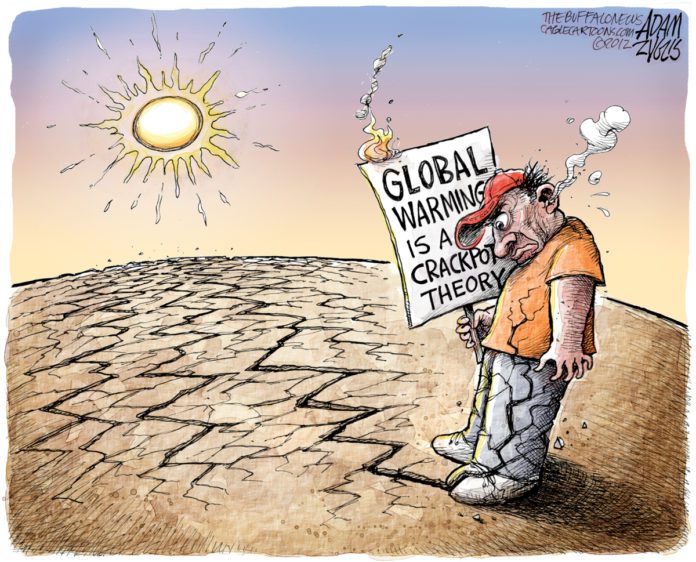
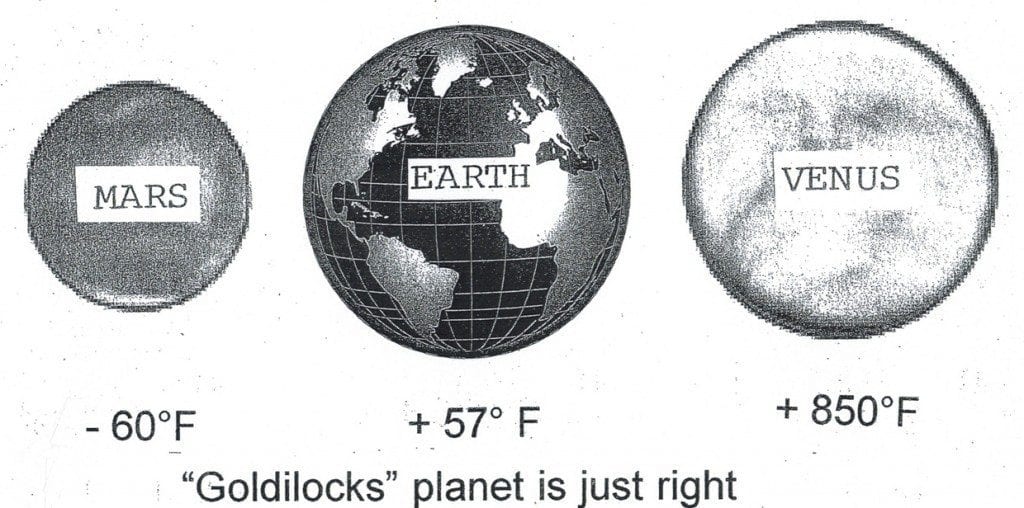
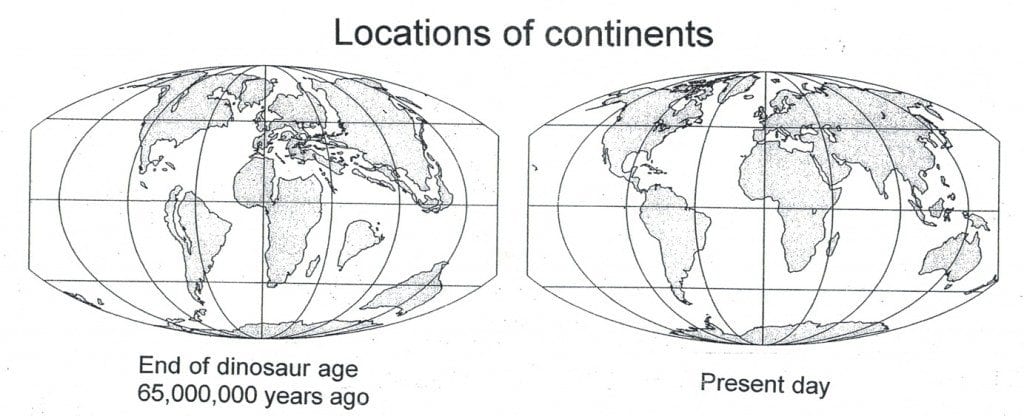
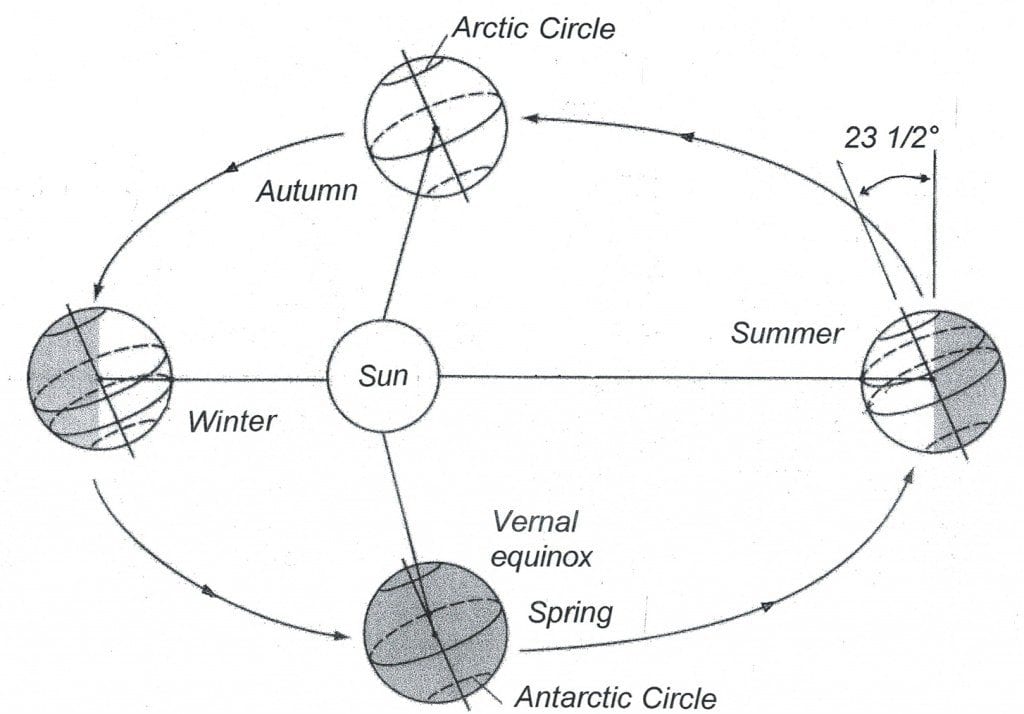
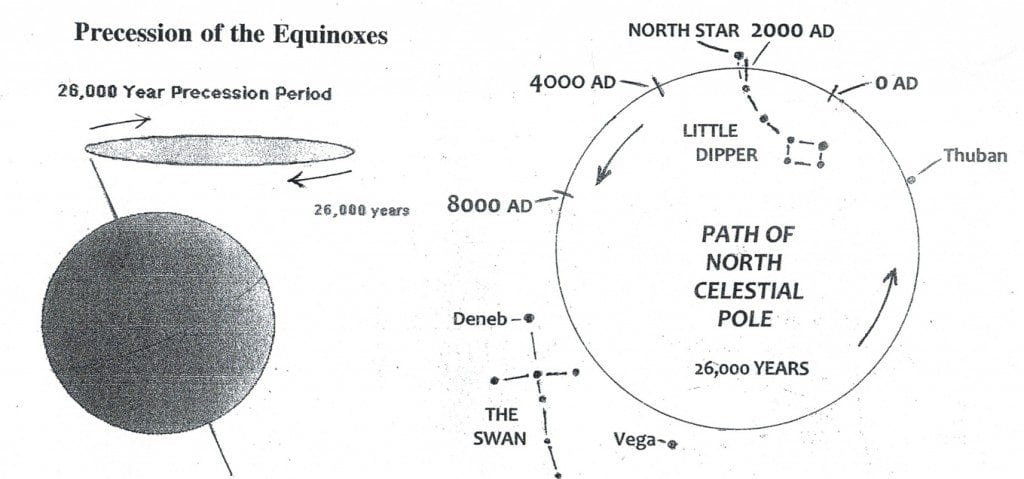
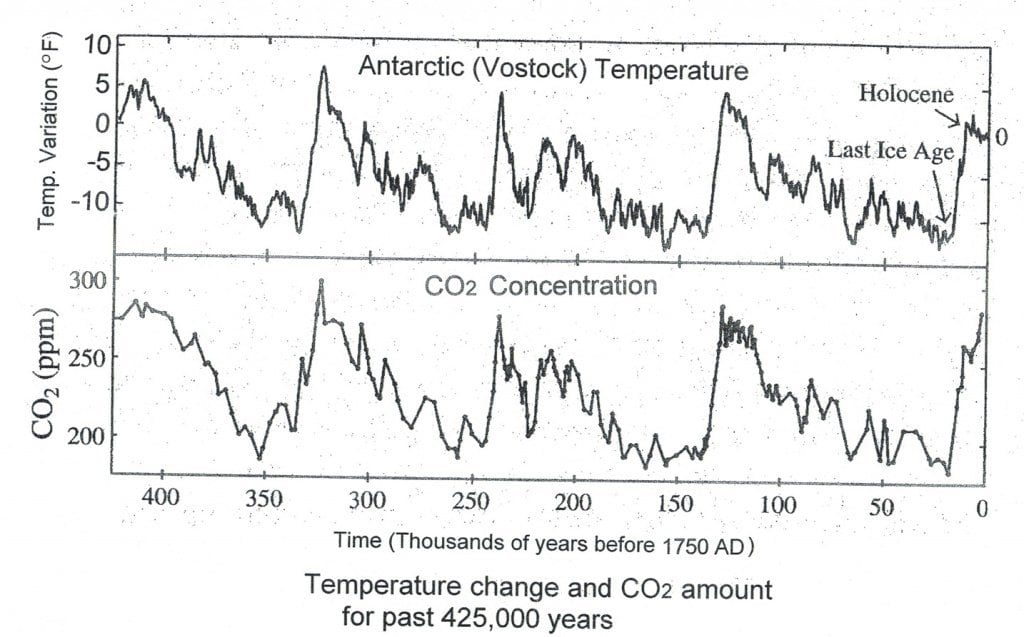
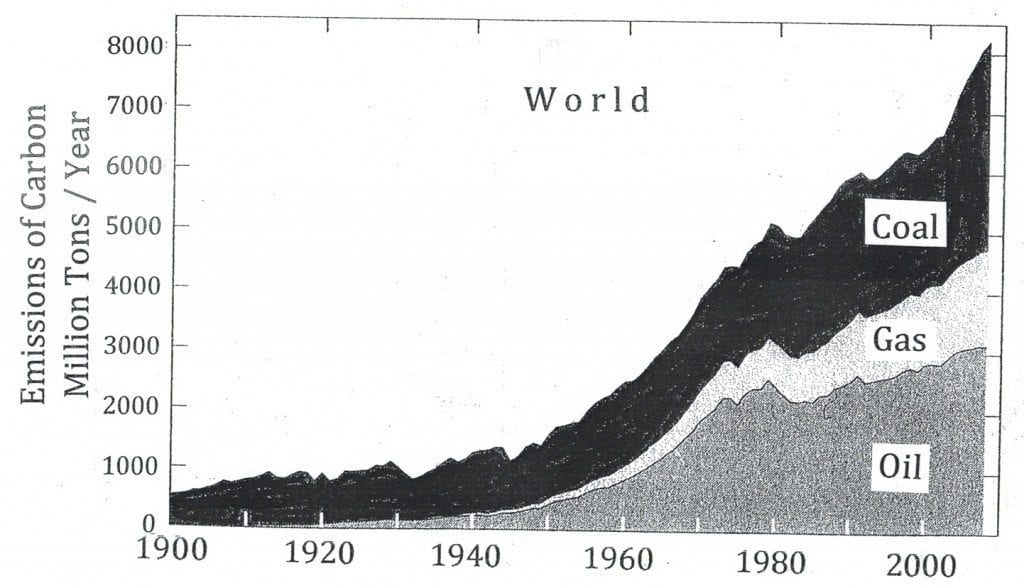
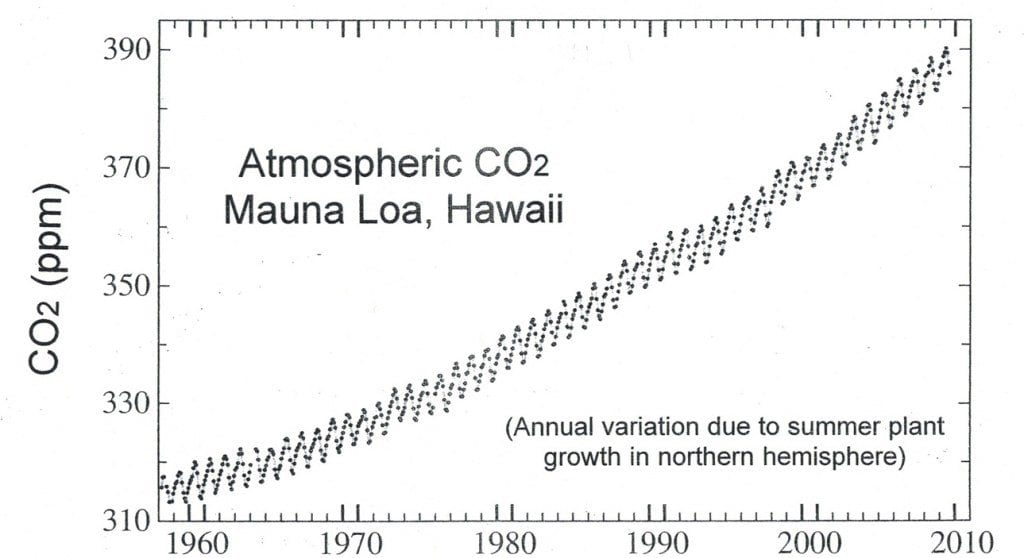






Thank you for the fine article..I am wildly upset concerning the future for all life on the planet.I follow Peter Sinclair who does entertaining UTube scientific explanations that are easy to understand.He also write for a climate bog for Yale Univ..Today he posted that Arctic Ice is in “Free Fall” others have written of the “Arctic in a Death Spiral”.This is bad news as tipping points reached mean more tipping points are reached… like the released of large amounts of Methane from clathrates…Very high plumes of methane from the melting permafrost and some lightening strikes do not make a pretty picture.I have had a good life thanks to fossil fuels..I will happily do with less to try to decrease the warming that is sure to get worse The Ocean has maybe 20 years before the only life will be some jelly fish…As the World Burns….
I have had the pleasure of meeting Mr Krumme and I attended his presentation on this at All Souls Unitarian in Tulsa. He is a real gentleman and a great Oklahoman.